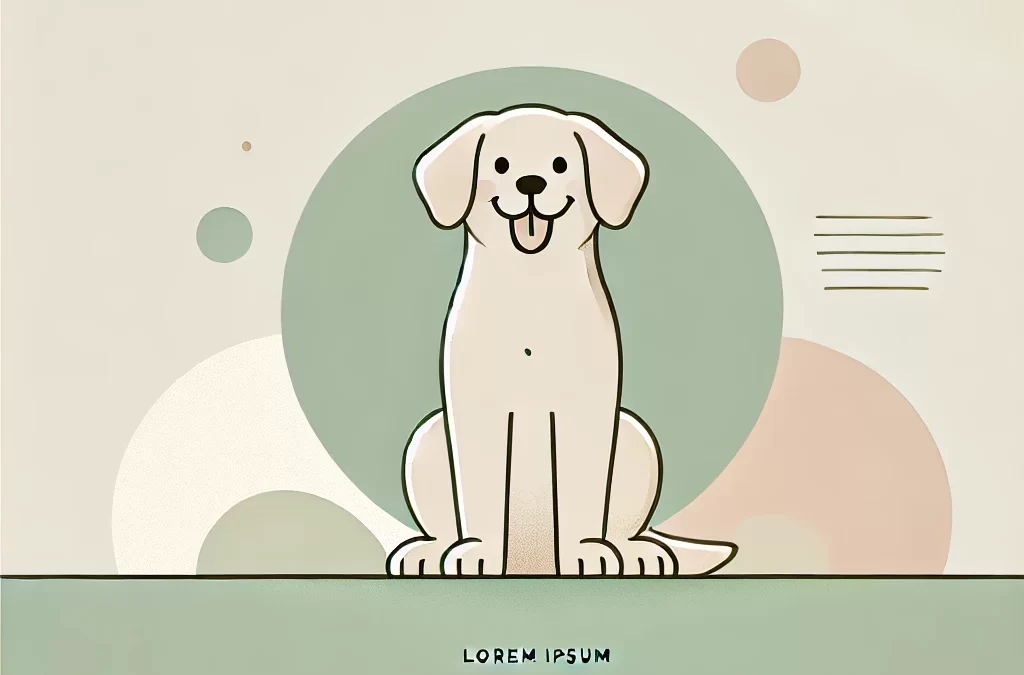
by TCMVET | Nov 21, 2024 | Dog Cancer & Tumors
When a beloved dog faces health challenges, pet owners often turn to modern diagnostics to uncover the issue. Among these, ultrasound has become a go-to tool for veterinarians. But how effective is it in detecting cancer in dogs? Let’s explore this question in-depth, examining both the strengths and limitations of this technology.
The Basics of Ultrasound in Veterinary Medicine
Ultrasound imaging, also known as sonography, uses sound waves to create real-time images of a dog’s internal organs. It is particularly useful for examining soft tissues, such as the liver, kidneys, spleen, and bladder. Unlike X-rays, which provide a static view, ultrasound offers dynamic visuals, enabling veterinarians to assess organ function and detect abnormalities.
How Ultrasound Detects Cancer
Ultrasound can help identify tumors, abnormal tissue growths, or irregular organ structures that may indicate cancer. For instance:
- Locating Tumors: Ultrasound can reveal the size, shape, and location of masses. This is especially helpful for cancers in the abdomen, such as liver or kidney tumors.
- Guiding Biopsies: While ultrasound cannot definitively diagnose cancer, it plays a critical role in guiding needle biopsies to extract tissue samples for laboratory analysis.
- Monitoring Progression: For dogs undergoing treatment for cancer, ultrasound is a valuable tool for monitoring how the disease responds to therapies.
The Limitations of Ultrasound in Cancer Detection
Despite its advantages, ultrasound has certain limitations:
- Cannot Confirm Cancer: Ultrasound can identify masses but cannot determine whether they are malignant (cancerous) or benign (non-cancerous). A biopsy or advanced imaging, such as MRI or CT scans, is usually required for confirmation.
- Operator Dependency: The accuracy of ultrasound depends on the skill and experience of the veterinarian. Misinterpretation of images can lead to false positives or negatives.
- Not Suitable for All Cancers: Ultrasound is less effective for detecting cancers in bones, lungs, or areas with dense structures. In such cases, other imaging techniques are more appropriate.
When to Consider Ultrasound for Your Dog
If your dog shows symptoms such as unexplained weight loss, vomiting, swelling, or lethargy, your vet may recommend an ultrasound as part of the diagnostic process. It is a non-invasive, painless procedure with minimal risk, making it a preferred first step in many cases.
Future Innovations: Enhancing Ultrasound’s Cancer-Detecting Capabilities
Advances in veterinary medicine are continually improving ultrasound technology. Techniques like contrast-enhanced ultrasound and elastography are emerging as promising tools for better identifying cancerous tissues. These innovations could soon make ultrasound more precise in distinguishing malignant from benign growths.
A Balanced Approach to Cancer Diagnosis
While ultrasound is a powerful diagnostic tool, it works best as part of a comprehensive diagnostic approach. Combining ultrasound with other techniques, such as blood tests, biopsies, and advanced imaging, ensures the most accurate diagnosis and effective treatment plan for your dog.
Final Thoughts
Ultrasound is an indispensable tool in veterinary medicine, offering valuable insights into a dog’s health. While it has its limitations, it plays a crucial role in detecting and managing cancer. By staying informed and working closely with your vet, you can ensure your furry companion receives the best care possible, even in the face of challenging diagnoses.
4o

by TCMVET | Nov 20, 2024 | Food & Health
s more pet parents seek innovative solutions to improve the lives of their cancer-stricken dogs, N-acetylcysteine (NAC) has emerged as a potential game-changer. Known for its antioxidant and detoxifying properties, NAC is garnering attention as a complementary therapy in the fight against canine cancer. But what makes this compound so special, and how can it transform cancer care for your furry friend? Let’s dive into this groundbreaking approach.
What Is NAC?
N-acetylcysteine (NAC) is a derivative of the amino acid cysteine. Widely used in human medicine for conditions like acetaminophen poisoning, chronic respiratory issues, and liver support, NAC’s ability to replenish glutathione levels (a master antioxidant in the body) makes it invaluable. In dogs, this translates into enhanced cellular protection and the mitigation of oxidative stress—key factors in cancer progression.
The Science Behind NAC and Cancer
Cancer thrives in environments of chronic inflammation and oxidative damage. NAC’s dual role as an antioxidant and anti-inflammatory agent addresses these root causes, potentially slowing tumor growth and improving overall health. Here’s how NAC can support dogs with cancer:
- Boosting Glutathione Levels
Glutathione is crucial for detoxifying cells and combating oxidative stress. Dogs with cancer often have depleted glutathione levels, leaving them vulnerable to further cellular damage. NAC acts as a precursor, restoring these levels and protecting healthy cells.
- Reducing Inflammation
Chronic inflammation fuels cancer development. NAC’s anti-inflammatory effects can disrupt this vicious cycle, potentially limiting tumor progression.
- Supporting Chemotherapy and Radiation
Cancer treatments often damage healthy cells along with cancerous ones. NAC helps protect normal cells, reducing side effects and improving recovery.
- Inhibiting Tumor Growth
Studies have shown that NAC may interfere with pathways that promote tumor cell proliferation, giving it potential as a direct cancer-fighting agent.
- Enhancing Immune Function
A strong immune system is critical in the fight against cancer. By reducing oxidative stress, NAC helps immune cells function more effectively.
How to Use NAC for Dogs with Cancer
When incorporating NAC into your dog’s cancer care plan, it’s essential to do so under veterinary guidance. Here’s what to consider:
- Dosage: The appropriate dosage depends on your dog’s size, overall health, and specific needs. Always consult your vet for personalized recommendations.
- Form: NAC is available in capsules, powders, and injectable forms. Oral supplements are the most common option for dogs.
- Complementary Therapies: NAC works best as part of a holistic approach, including a nutrient-rich diet, regular exercise, and other supportive therapies.
Benefits Beyond Cancer
While NAC is primarily discussed for its cancer-related benefits, it also offers other health advantages for dogs:
- Protecting liver function during chemotherapy
- Supporting respiratory health by thinning mucus in conditions like bronchitis
- Enhancing recovery from infections or immune-compromising conditions
Precautions and Side Effects
Although NAC is generally well-tolerated, it’s important to monitor for any adverse effects, such as gastrointestinal upset or allergic reactions. Additionally, NAC’s antioxidant properties may interfere with certain chemotherapy drugs, so timing and coordination with your veterinarian are critical.
A Holistic Vision for Cancer Care
The future of cancer care for dogs lies in integrative approaches that combine traditional treatments with scientifically backed natural therapies like NAC. By addressing the root causes of cancer and supporting overall health, NAC offers hope for a better quality of life and potentially improved outcomes.
This revolutionary compound doesn’t promise miracles, but it does open doors to a new way of thinking about cancer treatment—one that prioritizes your dog’s well-being on every level.
Final Thoughts
As more research uncovers the potential of NAC, its role in canine cancer care continues to grow. For pet parents seeking innovative ways to support their furry companions, NAC represents a beacon of hope. With proper guidance and a holistic approach, it might just be the missing piece in your dog’s fight against cancer.

by TCMVET | Nov 20, 2024 | Dog Cancer & Tumors
Canine Transmissible Venereal Tumor (TVT) is a unique form of cancer in dogs, primarily transmitted through direct contact. While veterinary intervention is typically necessary, there’s growing interest in home-based supportive care to complement medical treatment. In this article, we’ll explore how innovative, natural, and holistic practices can play a pivotal role in managing TVT at home, emphasizing the importance of partnership with a veterinarian.
Understanding TVT: A Quick Overview
TVT is a contagious tumor that affects dogs’ external genitalia, mouth, or nose. Common symptoms include:
- Visible tumor growths
- Bleeding or discharge
- Discomfort or pain in affected areas
The primary treatment includes chemotherapy (usually with vincristine), surgery, or radiotherapy. However, these treatments may not always be accessible or affordable for some pet owners. This is where home-based supportive care can make a difference.
Revolutionizing Home Care for Dogs with TVT
1. Immune-Boosting Nutrition
A dog’s immune system plays a critical role in combating cancer. Providing nutrient-dense meals can support their overall health. Consider:
- Lean protein sources: Turkey, chicken, and fish to maintain muscle mass.
- Cancer-fighting foods: Blueberries, carrots, and broccoli contain antioxidants that combat oxidative stress.
- Omega-3 fatty acids: Found in fish oil or flaxseed oil, these help reduce inflammation.
Pro Tip: Avoid foods high in sugar and grains, which can exacerbate tumor growth.
2. Natural Remedies and Herbs
Natural therapies can provide relief and help manage TVT symptoms. Some promising options include:
- Turmeric (Curcumin): Known for its anti-inflammatory and anti-tumor properties.
- Chuanxiong (Szechuan Lovage): A traditional Chinese herb believed to improve circulation and support healing.
- CBD oil: Can help reduce inflammation, manage pain, and improve overall comfort.
Important: Always consult a vet to determine safe dosages.
3. Creating a Stress-Free Environment
Stress can weaken your dog’s immune system. Ensure your pet has a calm and comforting environment by:
- Providing a quiet resting space away from household noise.
- Using calming aids like lavender essential oil diffusers (in a well-ventilated room).
- Engaging in light, low-stress activities to keep them active and happy.
4. Wound and Tumor Care
If external tumors are present, they may bleed or become infected. Home care includes:
- Gently cleaning the affected area with saline solution to prevent infection.
- Using veterinary-approved ointments to promote healing.
- Monitoring for signs of infection, such as redness, swelling, or foul odor.
5. Strengthening Gut Health
Dogs undergoing TVT treatments often suffer from digestive issues. Probiotics and prebiotics can improve gut health and enhance nutrient absorption. Yogurt (without added sugar) or veterinary probiotic supplements can be added to their diet.
6. Alternative Therapies
- Acupressure and Massage: Can help improve blood circulation and reduce pain.
- Homeopathy: Remedies like Arsenicum album or Thuja are sometimes used for cancer support (under veterinary guidance).
What Home Treatment Can and Cannot Do
While these approaches can enhance your dog’s comfort and overall well-being, they cannot replace professional medical care. TVT is a serious condition that often requires chemotherapy or other veterinary treatments for a cure. Home care is best used as a complementary approach to improve your dog’s quality of life and support recovery.
A Holistic Approach Is Key
The idea of treating TVT at home isn’t about finding a miracle cure but about creating an environment where your dog feels nurtured and supported. By combining veterinary treatment with innovative home care practices, you can give your furry friend the best chance at recovery.
Final Thought
Managing TVT at home demands commitment, creativity, and collaboration with veterinary professionals. It’s not just about treating a disease; it’s about restoring hope, health, and happiness to your dog’s life. With this holistic approach, pet owners can take an active role in their dog’s healing journey, ensuring they receive the love and care they deserve.

by TCMVET | Nov 18, 2024 | Dog Cancer & Tumors
Leukemia in dogs is often referred to as a “silent illness.” By the time symptoms surface, the disease may already have advanced. But what if we could listen to the subtle whispers of this hidden enemy before it strikes loudly? Recognizing the early signs of leukemia in dogs can not only save their lives but also drastically improve their quality of life. Let’s embark on an unconventional exploration of these early warning signals, blending clinical insights with a holistic approach to canine care.
Decoding the Subtle Hints
Leukemia often masquerades as other, less serious illnesses. Early detection requires a sharp eye and an intuitive understanding of your dog’s behavior. Here are the understated signs to watch for:
- Unusual Fatigue or Lethargy Your usually energetic pup suddenly prefers lounging over playtime. This lethargy isn’t just a result of aging or a rough day; it’s the body’s way of signaling that something deeper might be amiss.
- Pale Gums and Tongue Healthy gums should be a bubblegum pink. If your dog’s gums or tongue appear pale or white, it could indicate anemia, a common early sign of leukemia caused by low red blood cell production.
- Persistent or Unexplained Infections Frequent infections that don’t respond to treatment may point to a weakened immune system. Leukemia compromises white blood cell function, leaving dogs vulnerable to bacterial, fungal, or viral invasions.
- Swollen Lymph Nodes Enlarged lymph nodes, particularly around the neck, shoulders, or back legs, are a telltale sign that something is wrong. While not exclusive to leukemia, it’s a sign worth investigating.
- Unexplained Weight Loss A dog with leukemia may lose weight despite maintaining its appetite. This occurs because the disease hijacks the body’s resources, leading to muscle wasting and energy depletion.
- Bruising or Bleeding Watch for small red or purple dots under the skin (petechiae) or unexplained bruises. Leukemia disrupts platelet production, leading to clotting issues.
- Loss of Appetite or Vomiting While these symptoms are common to many illnesses, their persistence could signal an underlying issue like leukemia.
Why Early Detection Matters
The earlier leukemia is detected, the better the treatment outcomes. Many dog owners assume that occasional lethargy or loss of appetite is normal, especially in older dogs, but ignoring these signs could mean missing an opportunity for timely intervention. Routine blood tests are a simple yet powerful tool in catching leukemia before it progresses.
Beyond the Clinical: The Emotional Connection
Dogs are masters at hiding pain. Often, behavioral changes such as withdrawing from family interactions or seeming “off” are early emotional cues of distress. Building a deep connection with your pet allows you to pick up on these subtleties.
Holistic Perspectives on Canine Leukemia
While traditional treatments like chemotherapy and steroids are common, integrating holistic care can enhance your dog’s quality of life. Here are some options:
- Nutritional Support
- Include foods rich in antioxidants like blueberries and spinach to boost the immune system.
- Bone broth provides essential nutrients and helps maintain appetite.
- Natural Supplements
- Turmeric: Its anti-inflammatory properties can support overall well-being.
- Reishi Mushrooms: Known for their immune-boosting and anti-cancer properties.
- Stress Management
- Gentle massages and aromatherapy with dog-safe oils like lavender can alleviate stress, which may exacerbate symptoms.
- Herbal Remedies
- Traditional Chinese Medicine herbs like astragalus and dang shen may support immunity and energy levels.
Preventive Measures: Can We Stay Ahead?
While leukemia isn’t always preventable, certain actions may lower risk factors:
- Regular Veterinary Check-Ups: Annual blood panels can identify abnormalities early.
- Limit Exposure to Toxins: Avoid pesticides, herbicides, and smoking around pets.
- Maintain a Healthy Diet: Balanced, nutrient-rich diets keep your dog’s immune system robust.
When to Act
If your dog exhibits more than one of these early signs, don’t wait. Consult a veterinarian immediately. A simple blood test can provide answers, and if leukemia is diagnosed, early intervention can extend your dog’s life significantly.
A Glimpse of Hope
Leukemia doesn’t have to be a death sentence. With advancements in veterinary care, holistic support, and the unwavering love of a pet parent, dogs diagnosed with leukemia can live fulfilling lives. The key lies in vigilance, education, and taking proactive steps.
Conclusion
The early signs of leukemia in dogs are like whispers in the wind—easily overlooked but vital to hear. By staying attuned to your dog’s physical and emotional cues, you can intercept this hidden enemy before it takes hold. After all, our four-legged companions deserve nothing less than our absolute best in their times of need.

by TCMVET | Nov 18, 2024 | Food & Health
When it comes to our furry friends, ensuring their joint health is as vital as meeting their basic needs. Joint supplements are more than just preventive care; they are a bridge to a longer, happier life for pets. But what truly defines the best pet joint supplement? Let’s break away from the ordinary and explore unconventional yet effective solutions that redefine joint health.
Rethinking Joint Care: It’s Not Just About Glucosamine
For years, glucosamine and chondroitin have dominated the pet supplement industry. While they’re effective, relying solely on these ingredients may overlook other innovative solutions. Modern joint supplements are now integrating:
- Omega-3 Fatty Acids: Known for their anti-inflammatory properties, these can drastically improve joint mobility. Look for supplements that include green-lipped mussel extract, a potent source of omega-3s.
- Turmeric and Curcumin: These natural ingredients are gaining traction as powerful antioxidants that reduce inflammation and slow cartilage breakdown.
- Hyaluronic Acid: Often associated with skincare, this ingredient is now being used in pet supplements to improve joint lubrication, ensuring smoother movement.
Tailoring Joint Care to Your Pet’s Lifestyle
No two pets are the same. Their joint health needs vary based on breed, age, activity level, and even diet. Instead of a one-size-fits-all approach, consider these tailored solutions:
- For Senior Pets: Opt for supplements enriched with collagen and MSM (methylsulfonylmethane) to support cartilage repair and improve mobility.
- For Active Breeds: Look for ingredients that focus on muscle recovery and joint cushioning, such as Boswellia serrata, an herb used in traditional medicine.
- For Small Breeds: Choose supplements in smaller, easy-to-chew forms or liquids that can be added to food for convenience.
Holistic Joint Health: Beyond Supplements
The best joint supplement is only part of the equation. Supporting joint health requires a holistic approach:
- Weight Management: Excess weight puts unnecessary strain on joints. A balanced diet complemented by the right supplements ensures your pet maintains an ideal weight.
- Low-Impact Exercise: Activities like swimming and controlled walking help maintain joint flexibility without overexertion.
- Regular Veterinary Check-Ups: Monitoring your pet’s joint health with a vet helps catch issues early and adapt their care plan.
Innovative Formats: Making Supplements Pet-Friendly
The days of forcing your pet to swallow pills are over. The best supplements now come in:
- Tasty Chews: Flavored options that pets mistake for treats.
- Powder Formulas: Easily mixed with meals, perfect for picky eaters.
- Oil Drops: Convenient for pets with dental issues or those who dislike solids.
DIY Joint Health: Can You Make Your Own Supplement?
If you’re a hands-on pet parent, creating homemade supplements might be an option. Bone broth is an excellent natural source of glucosamine and chondroitin. Combine it with turmeric paste (made with coconut oil and black pepper for absorption), and you’ve got a powerful anti-inflammatory concoction.
However, consult your veterinarian before diving into DIY solutions to ensure proper dosage and compatibility with your pet’s diet.
Spotlight on Unique Ingredients
The pet supplement industry is seeing a rise in unique, science-backed ingredients, such as:
- Astaxanthin: A potent antioxidant that reduces oxidative stress and promotes joint recovery.
- Eggshell Membrane: A natural source of collagen, glucosamine, and hyaluronic acid, it supports cartilage repair and overall joint health.
- Cissus Quadrangularis: A lesser-known herb traditionally used to heal bones and reduce joint pain.
How to Choose the Right Supplement
When shopping for a joint supplement, keep these factors in mind:
- Transparency: Look for brands that disclose all ingredients and their dosages.
- Third-Party Testing: Ensure the product has been tested for safety and efficacy.
- Veterinary Approval: Supplements recommended by vets often have clinical backing.
Conclusion: A Joint Effort for Better Health
The best pet joint supplement is more than just a product—it’s part of a lifestyle commitment to your pet’s well-being. By embracing innovative ingredients, tailoring care to your pet’s needs, and adopting a holistic approach, you can ensure your pet enjoys every leap, run, and tail wag to the fullest.
Remember, the journey to joint health doesn’t have to be ordinary. It’s time to think outside the treat bag and give your pets the care they truly deserve.






